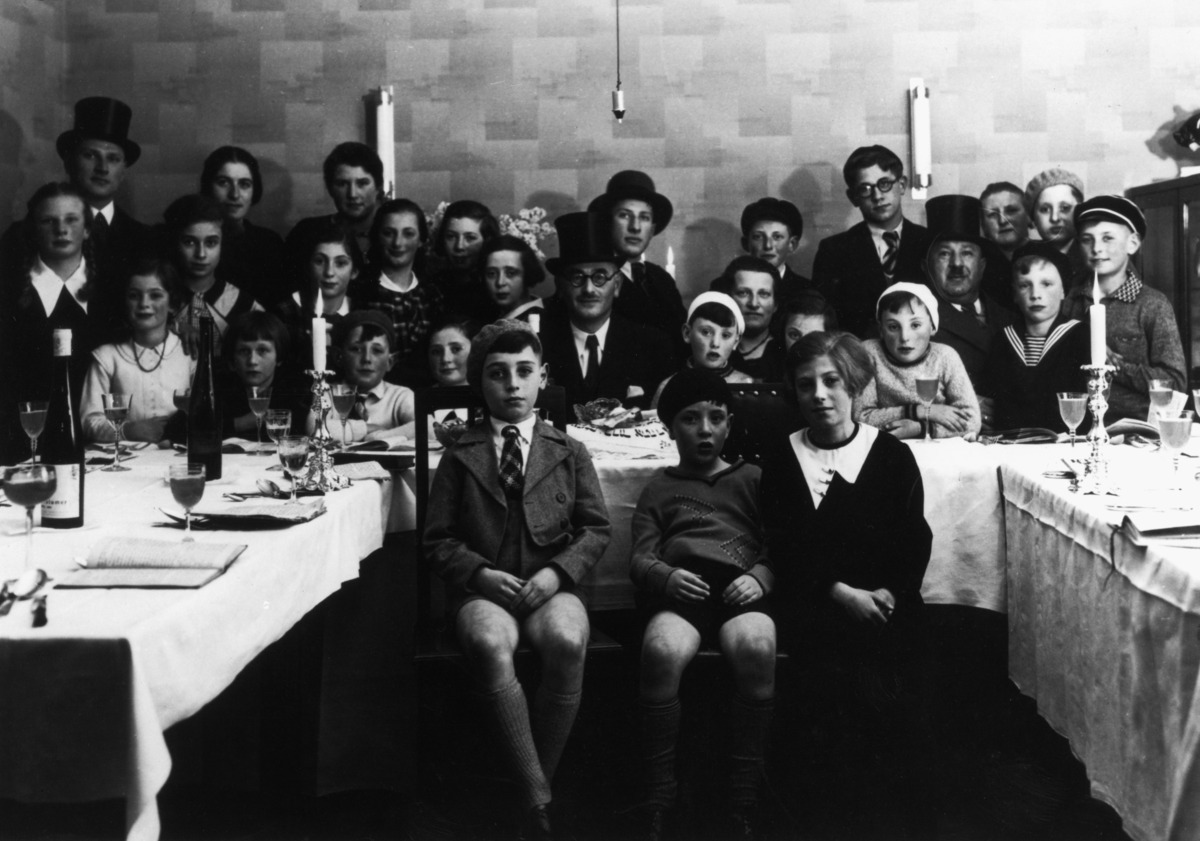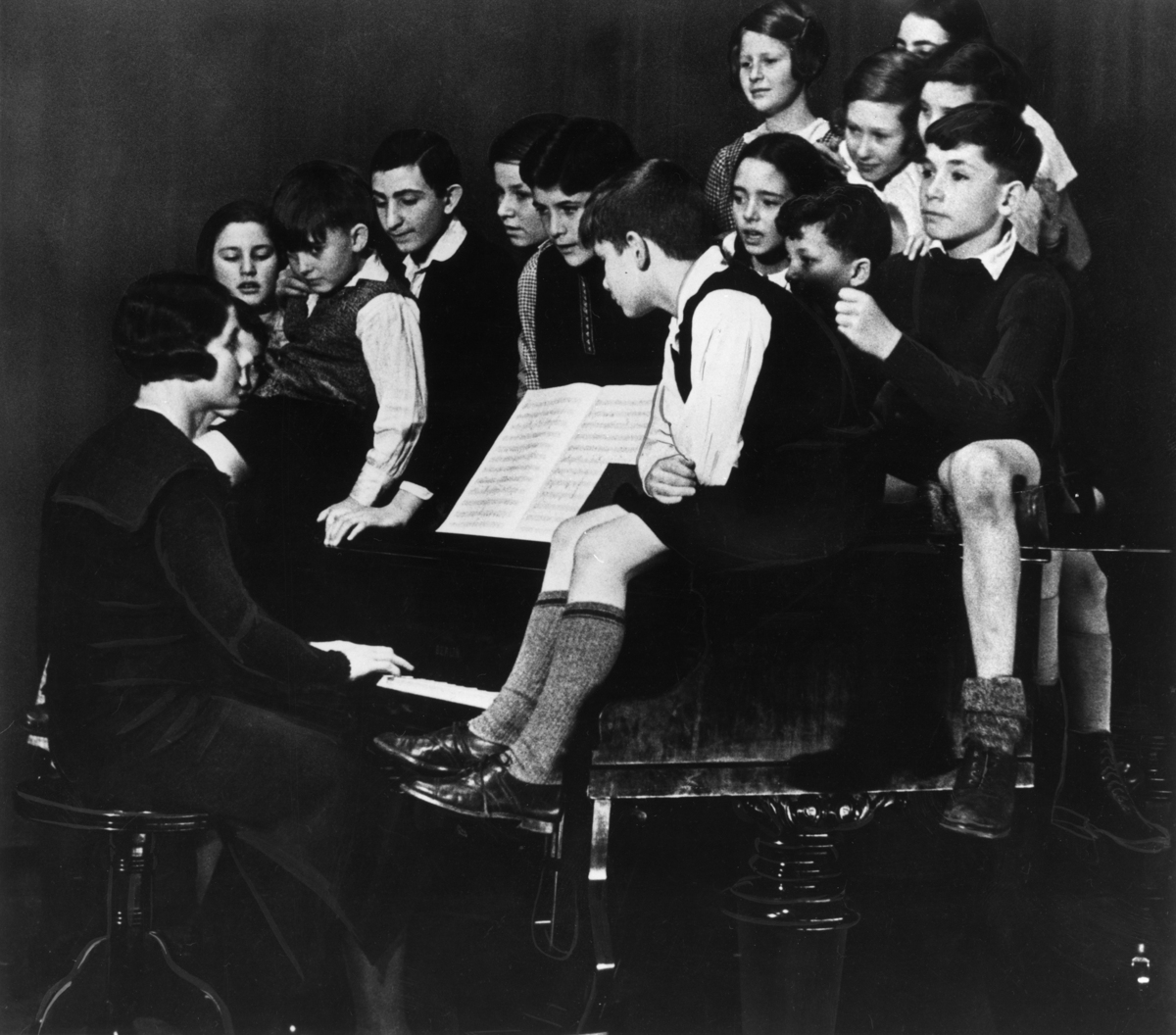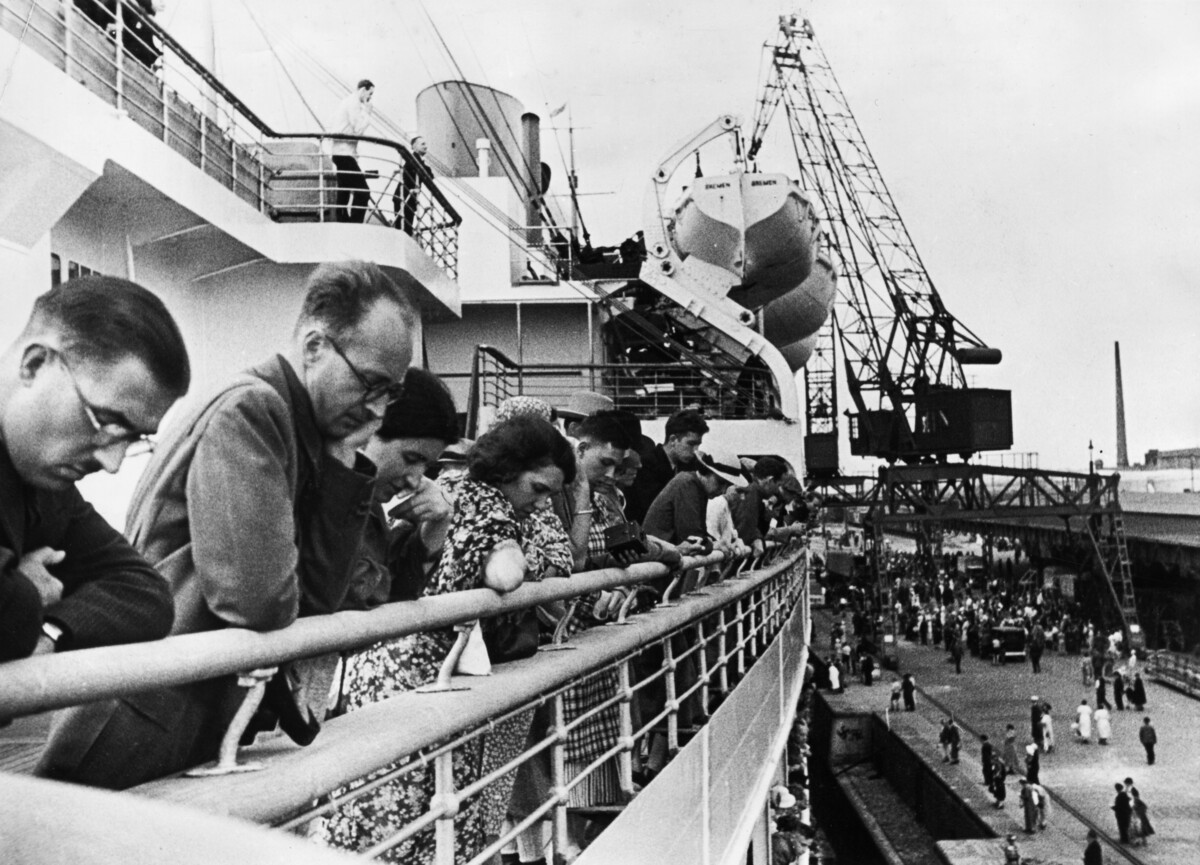Abstract
These images depict daily life for Jews in Germany during the early
years of the Nazi regime. While many Jews faced prejudices in their
interactions with neighbors and increasing persecution from local and
state authorities, they also maintained important traditions in an
attempt to create some semblance of normalcy. Families celebrated
important rituals like the Passover Seder (depicted here in the image
from 1934 of a Jewish family in the Rhineland), while others continued
to participate in their regular social clubs and associations (seen, for
example in the photo of the Berlin Jewish Community Choir in 1934).
After the pogrom of November 9–10, 1938, an additional wave of Jews
decided to emigrate from the Reich, as the last image shows. Most
families, however, did so with continued reluctance, as departure ended
careers, educations, and relationships. In many cases, emigration was
infeasible: elderly relatives found it difficult to travel, few states
after 1938 were willing to accept Germany’s fleeing Jews, and the Nazi
regime made emigration a financially ruinous process. All of these
factors meant that families were often separated during the emigration
process, as some relatives stayed behind to allow the younger
generations an opportunity to start a new life abroad. It is estimated
that between November 10, 1938, the day after Kristallnacht, and
September 1, 1939, the beginning of World War II, 115,000 Jews decided
to leave Germany. The total number of Jews who left Germany between
January 30, 1933, and September 1, 1939, is estimated to be 400,000.


